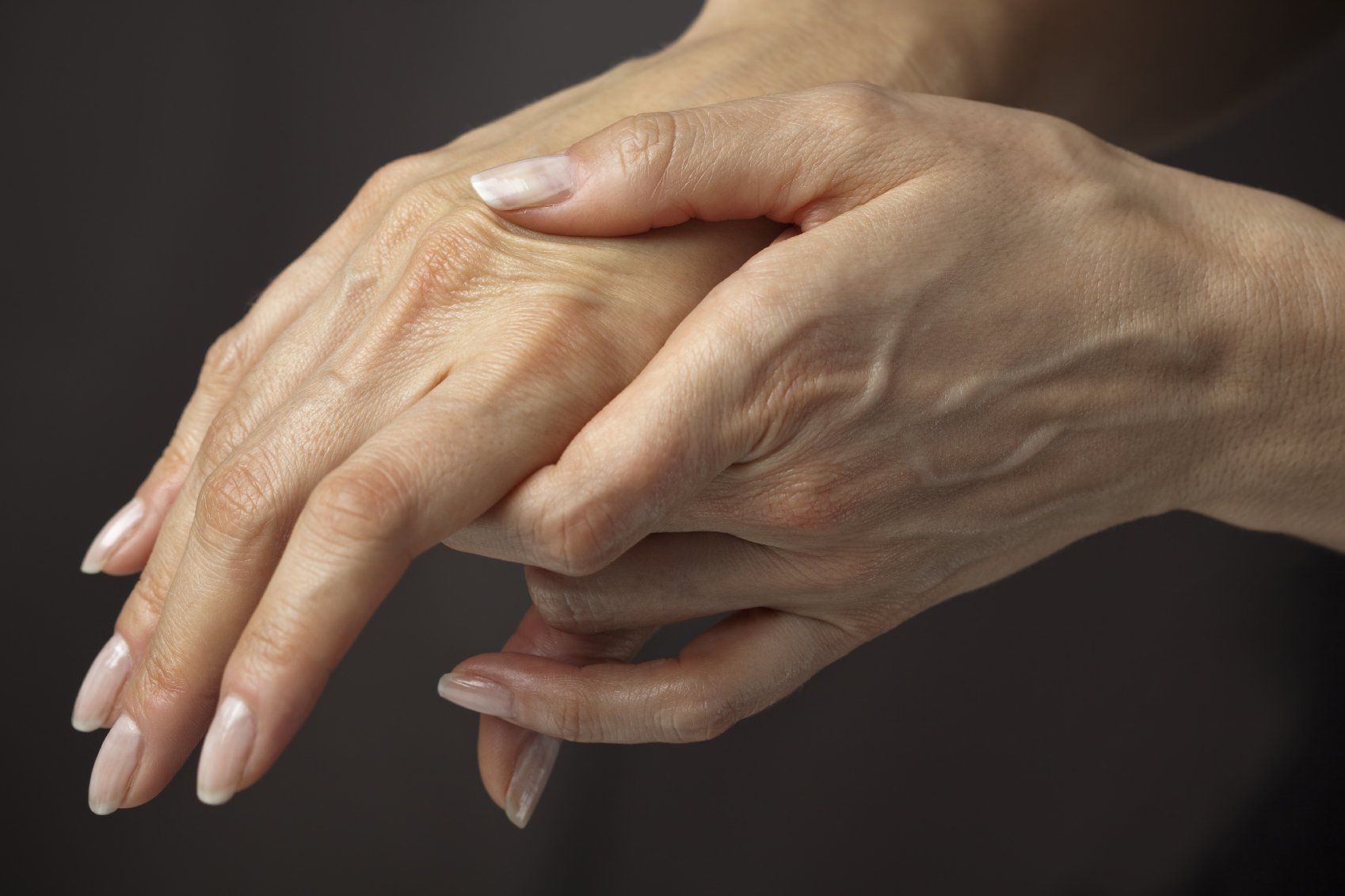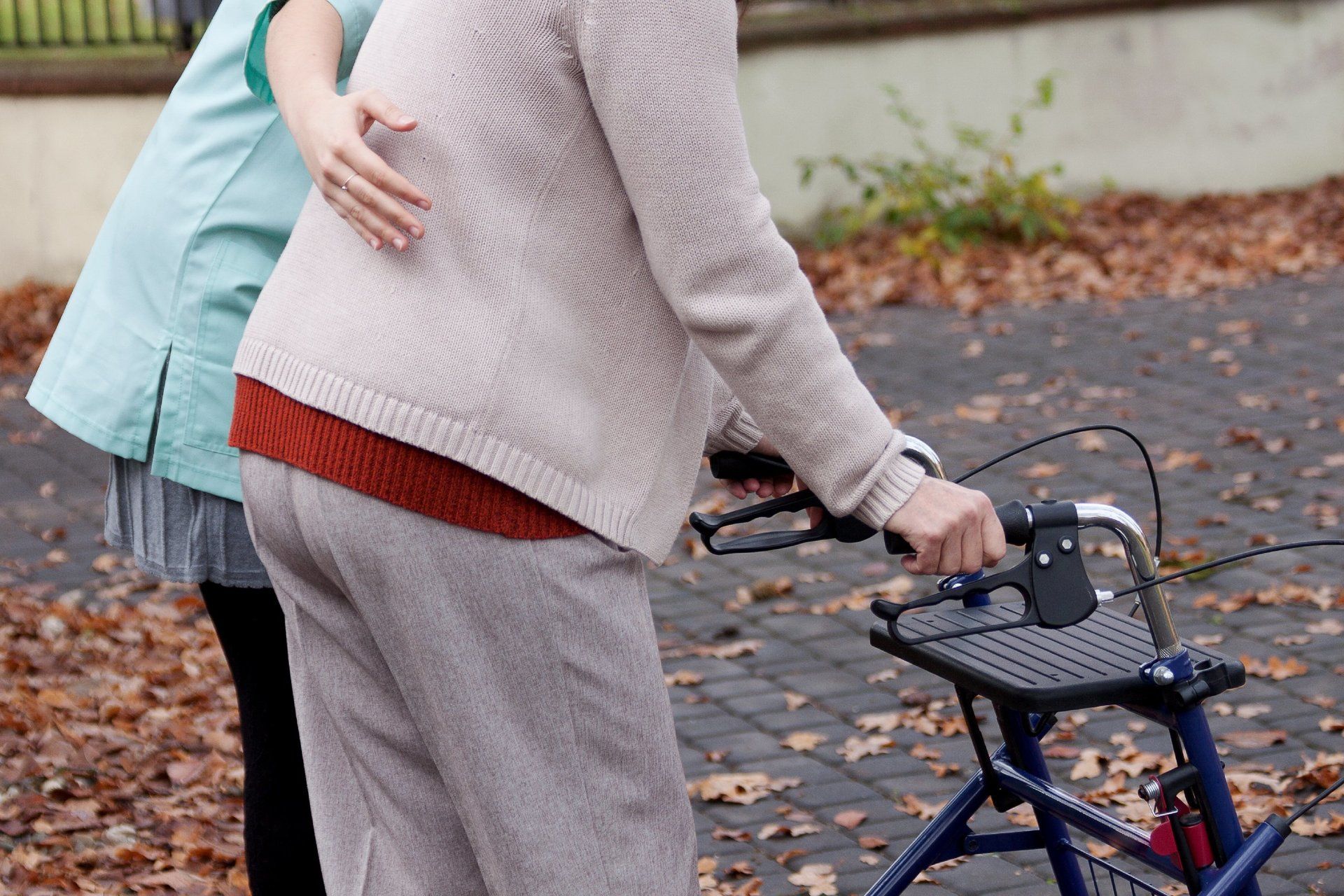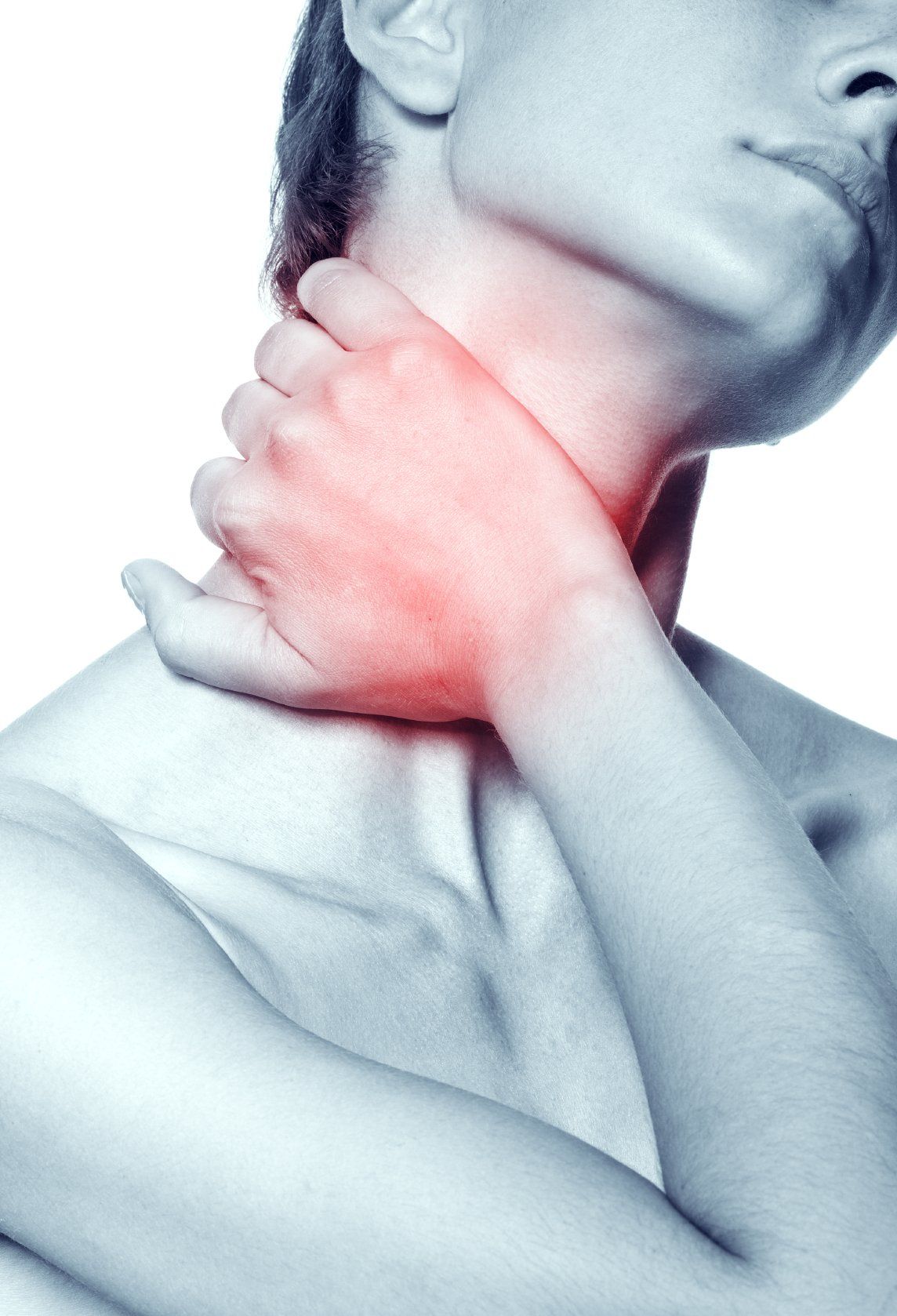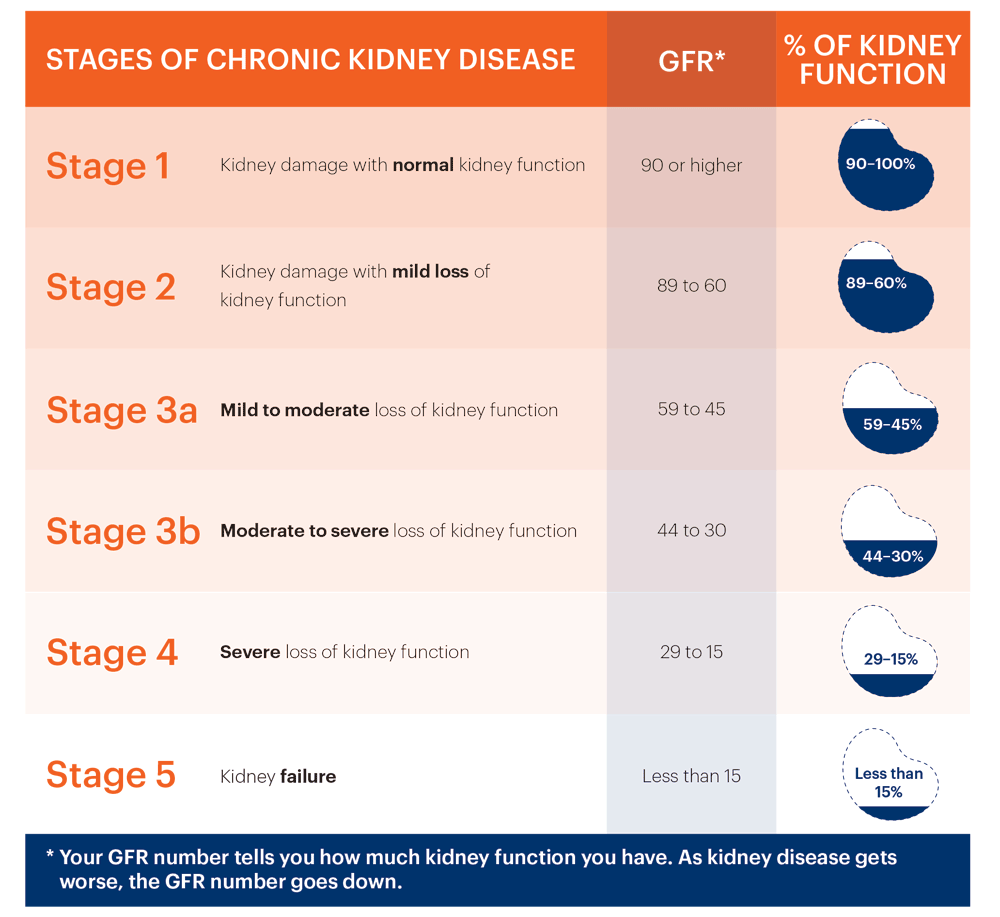This graphic from the national kidney foundation shows the stages of Chronic Kidney Disease (commonly referred to as CKD). In our CKD population - the goal is clear - try to slow down decline; however, that can be very difficult. Our first step is to identify risk factors that could be detrimental to a patient’s kidney function then subsequently attempting to optimize those risk factors. Data has shown that the progression of kidney disease can greatly be reduced by controlling some of the common risk factors of progression.
Organic Arthritis - Why use it?
Dr. J | a board certified Internist and Nephrologist practicing in the DC/Metropolitan area with over 30 years of clinical experience
Organic Arthritis - Why use it?
Because we need another alternative for patients particularly with Chronic Kidney Disease / Congestive Heart Failure / Uncontrolled Hypertension / Stomach Gastritis or Ulcerations
Before I get into some details on Organic Arthritis - I want to provide some background on my medical experience and share some insights on a common recurrent issue I kept unfortunately encountering with my patients. I am a dual board certified Internal Medicine and Nephrology physician (via the American Board of Internal Medicine (https://www.abim.org/). Nephrology is a unique field in medicine and I have had the immense pleasure navigating it for over 30 years. It has been a tremendous honor connecting with so many patients and helping guide them through a plethora of issues such as: (can click the text/links below for more information)
- Chronic Kidney Disease
(commonly referred to as CKD)
- Dialysis
- either Hemodialysis or Peritoneal Dialysis
- Electrolyte disorders - such as sodium
/ potassium
/ calcium issues
Nephrology is a field that typically results in a consistent connection with patients most commonly as they navigate chronic kidney disease and/or dialysis/kidney transplantation. The goal for every patient with CKD (chronic kidney disease) is to work on slowing down their decline in kidney function (usually gauged by their serum Creatinine
- which is used to calculate their estimated GFR (Glomerular filtration rate). This graphic from the national kidney foundation shows the stages of CKD:
The most common risk factors for progressive CKD include:
- Diabetes
We work with our patients to help optimize their diabetic control and hypertension control along with a multitude of other risk factors. We strongly advise our patients to avoid medications that have associations with progression of kidney disease. In all my years of practice - by far the most common medications
kidney specialists generally ask patients to avoid/stop are NSAIDs. Below is a list of common NSAIDS (click the text/link to see their websites (and you can parse through the caution/avoid use sections!):
We work with our patients to help optimize their diabetic control and hypertension control along with a multitude of other risk factors. We strongly advise our patients to avoid medications that have associations with progression of kidney disease. In all my years of practice - by far the most common medications kidney specialists generally ask patients to avoid/stop are NSAIDs. Below is a list of common NSAIDS (click the text/link to see their websites (and you can parse through the caution/avoid use sections!):
- Advil
/ Ibuprofen
- Motrin
- Aleve
/ Naproxen
- Voltaren
/ Diclofenac
- Celebrex
/ Celecoxib
- Mobic
/ Meloxicam
- Aspirin
(Arthritis strength)
We in nephrology are not alone in our recommended avoidance of NSAIDS. Most Gastroenterologists I know advise their patients with stomach ulcers/gastritis to avoid all NSAIDS (stomach mucosal irritation/ulceration is a known issue with NSAIDs). Most Cardiologists I know also will tell their patients to avoid NSAID use - NSAIDs have been shown to accelerate Hypertension and could lead to fluid retention/congestive heart failure exacerbations/progressions.
This mantra of NSAID avoidance by many internists/specialists leads to a major issue in our patient populations. NSAIDS are generally the best anti inflammatory agents for joint/muscle issues and without it we are left with:
1) Tylenol/Acetaminophen/Paracetamol (Arthritis strength or Extra Strength) - The issue is study data is mixed on Acetaminophen and
may show it is not very effective
at controlling joint inflammation.
Or
2) Opioids (such as Morphine / Percocet / Vicodin / Dilaudid / Fentanyl) or Opioid like medications (such as Tramadol) - The issues is Opioids are dangerous medications that can be addictive in nature and can lead to bad outcomes
(this link will lead to the US Department of Health and Human Services epidemic information site
I can not count the number of times our practice had a patient we told to avoid NSAIDS in our clinic who then came to the office with suboptimal relief on Tylenol/Acetaminophen. Came with issues walking/exercising. Issues in the quality of their lives. I generally do not prescribe opioids - especially in the chronic kidney disease population which impairs the body's ability to clear many opioids and can increase the risk of overdose/toxicity. I had to ask them to seek orthopedic specialists to help control their symptoms - but procedural intervention can often times be inconvenient and difficult particularly in patients with multiple medical issues.
I can not stress the importance of mobility/exercise - there is a lot of data from organizations such as the American Heart Association noting the benefits of regular activity/exercise. I felt stuck - I started searching with my partners for a potential remedy for joint/muscle inflammation that our patient population could try.
We began looking into herbal/holistic substances that have been utilized for generations in inflammatory relief across the world. We parsed basic science/bench as well as clinical research databases. Our ingredients have shown COX or IL37 suppression or urine prostaglandin decrease indicating effectiveness in suppressing the inflammatory cascade with the caveat of no known issues with stomach lining or kidney function / Sodium retention / Blood Pressure elevation. In 2014 after some testing and adjustments - we solidified a powder based regimen and would at times suggest patients seeking alternative/additional relief try it. We did not commercially sell it but would just suggest they obtain and try the ingredients on their own.
The response was tremendous and more often than not this became their go to relief agent. The only consistent suggestion (and complaint) was the taste of the powders and the need for a tablet to ease delivery/use. We adjusted the extract ratios/concentrations and were able to manufacture (made in the USA at an FDA registered and GMP certified facility) a coated (should be tasteless) tablet to help ease use. We sincerely hope Organic Arthritis assists you on your path to healthy and meaningful living. Thanks for taking time out to join me on this journey!

We all know the importance of staying active and exercising. It is advice we have heard many times as we navigate the twists and turns known as life. Often it is easier said than done especially for those with arthropathy and joint pains. However, we must fight the battle and remain as mobile and dynamic as possible. Because data shows that our quality of life, overall health, and even life expectancy itself are greatly impacted by our patterns of activity.

Osteoarthritis is commonly referred to as the “wear and tear” degenerative joint disease. It typically results from the gradual loss of cartilage - the tough connective tissue that is within/between joints. In a way too simple analogy of this complex mechanism - this cartilage serves as essentially a shock absorber preventing direct shear force or “bone on bone” pressure. Once the shock absorber is weakened/gone – trauma will slowly lead to inflammation and erosion of the joint (PAIN!). This leads to a pretty straightforward question - is there a way to repair or at the least slow down the decline of cartilage? Enter Glucosamine - which is an amino sugar and precursor in the synthesis of glycosylated lipids and proteins. It is a natural compound that exists in our cartilage.

Osteoarthritis is one of the most common medical conditions in the world and is commonly referred to as “wear and tear” degenerative joint disease. It typically results from the gradual loss of cartilage within/between joints. This cartilage serves as a type of shock absorber preventing direct shear force and “bone on bone” pressure. Once the shock-absorber is gone it will slowly lead to inflammation and erosion of the joint. US Centers for Disease Control data estimate approx 60 million people with doctor diagnosed arthritis – and remember many people live with joint aches/pain without seeing a physician or getting a formal diagnosis of OA. Sadly the symptoms of OA simply do not stop at the joint. The Arthritis Foundation notes that individuals with OA are almost three times more likely to develop cardiovascular disease (CVD) or heart failure than those without OA. Also, people with osteoarthritis experience as much as 30 percent more falls and have a 20 percent greater risk of fracture than those without OA. These links are especially strong when arthritis is in certain weight bearing/balance joints, such as the knee/back/hip. It makes sense – pain/weakness especially in our stabilizing joints such as knees/hips/spine will limit mobility and lead to risk factors such as weight gain, cardiovascular disease, diabetes coupled with stability issues. These patients would have difficulty following American Heart Association recommendation s that recommend increased physical activity and note that becoming more active can help lower blood pressure and also boost levels of good cholesterol. Without regular physical activity, the body slowly loses its strength, stamina and ability to function well - People who are physically active live about 7 years longer than those who are not active and are obese (American Heart Association). Studies have shown that adults who are inactive/minimally active more than 4 hours a day had a 46% increased risk of death from any cause and an 80% increased risk of death from cardiovascular disease! So now let us focus on some of the clinical presentations of Osteoarthritis (OA). In general there is a marked variability of disease expression. Although most patients present with joint pain and functional limitations, the age of disease onset, sequence of joint involvement, and disease progression vary from person to person. OA ranges from an asymptomatic, incidental finding on clinical or radiologic examination to a progressive disabling disorder eventually culminating in "joint failure" with impaired mobility and quality of life. The primary symptoms of osteoarthritis (OA) are joint pain, stiffness, and motor restriction. Symptoms usually present in just one or a few joints in a middle-aged or older person. Other manifestations in patients with OA include sequelae such as muscle weakness, poor balance, and associated conditions such as fibromyalgia (a disorder characterized by widespread musculoskeletal pain accompanied by fatigue, sleep, memory and mood issues).

Osteoarthritis is oftentimes characterized in simple terms - typically referred to as a “wear and tear” injury to a specific joint. This usually involves the weight bearing joints of the body such as the lower back (lumbar spine), the hips, or the knees but can also include common repetitive use joints such as the fingers/toes and also the ankle (especially if historical trauma/injury is noted). In actuality - osteoarthritis is a complex system with many mediators that can affect degradation of joints/cartilage. There are multiple mechanisms that can help trigger erosive joint disease - including several metabolic triggers. In this excellent review by Wang/Hunter et a l from Osteoarthritis and Cartilage - they have an interesting info graphic highlighting potential metabolic contributors to OA (shared below).

Falls are a major issue especially in our elderly population and falls are the leading cause of injury, both fatal and nonfatal, among older adults in the United States . I can not even count the number of lives that were significantly (and often times permanently) changed after a fall through my decades of practice as a Nephrologist and Internist.

Cultures around the world, originally in eastern philosophy, have utilized mind body movement exercises for generations for various potential mental and physical benefits. These practices have increased in popularity and scope and are now truly global disciplines such as yoga and tai chi . Yoga likely was founded in Indi a and entails discipline in physical, mental, and spiritual realms with originally strong followings in the hindu and buddhist doctrines. It has morphed from being tied to a single country and also bypassed religious connotations. The term "yoga" in the Western world often denotes a modern form of hatha yoga and posture-based physical fitness, stress-relief, and relaxation techniques sometimes accompanied with breathing exercises The focus of yoga in this modern sense is to blend posture based positions/poses to help facilitate exercise for the body and potentially mind. There are many different disciplines/variations of Yoga with significant fluctuations in their physical demands. Many researchers/physicians attempt to quantify the strenuousness of exercises by their energy cost of exercise commonly measured in metabolic equivalent of task (MET). Less than 3 METs counts as light exercise; 3 to 6 METs is moderate; 6 or over is vigorous. American College of Sports Medicine and American Heart Association guidelines count periods of at least 10 minutes of moderate MET level activity towards their recommended daily amounts of exercise. For healthy adults aged 18 to 65, the guidelines recommend moderate exercise for 30 minutes five days a week, or vigorous aerobic exercis e for 20 minutes three days a week. Treated as a form of exercise, a complete yoga session with asanas (body posture) and pranayama (focusing on breath) discipline provides 3.3 ± 1.6 METs which would be classified as an average/moderate workout in strenuousness. There have been several hundred published articles/scientific trials on Yoga and its potential health benefits. Let us focus on some of the data for arthropathy. In one randomized control trial by Deepeshwar et al - Sixty-six individual diagnosed with with knee osteoarthritis (ages between 30 and 75 yo) were randomized into two groups. One group would then participate in yoga for 1 week at a yoga center ( n = 31) and then a control ( n = 35) group who did not participate in any yoga activities. Multiple functional tests were performed on day 1 and then at day 7 - including the Falls Efficacy Scale (FES), Handgrip Strength test (left hand LHGS and right hand RHGS), Timed Up and Go Test (TUG), Sit-to-Stand (STS), and right & left extension and flexion. Results indicated a significant reduction in TUG ( p < 0.001), Right ( p < 0.001), and Left Flexion ( p < 0.001) whereas significant improvements in LHGS ( p < 0.01), and right extension ( p < 0.05) & left extension ( p < 0.001) from baseline was found in the yoga group. This would suggest improved muscular strength, flexibility, and functional mobility in the yoga group. This was a small study that also was completed over a short time frame (1 week) but did show marked functional improvements. Let us look at more data via a large review by Haaz et a l . Researchers combed through peer-reviewed clinical trials (published from 1980-2010) that used yoga as an intervention for arthritis patients and reported quantitative findings. Eleven studies were identified, including four randomized control trials and four non randomized trials. The trials reviewed data is below in the table.

Let us review an interesting study from the Harvard medical system published in the American Journal of Clinical Nutritio n and also Osteoarthritis and Cartilage Journal by Xu et all dealing with the potential impacts of dietary intake patterns and progression of Knee osteoarthritis. There is an age old saying - "You are what you eat" and there has been past data on certain foods/nutrients linked with outcome effects on knee arthritis such as (click the links below for reference articles): Soft drink consumption (potential increased risk of OA progression) Milk consumption (potential decreased risk of OA progression particularly in women) Dietary fat intake (potential increased risk of OA progression) Strawberrie s (potential decreased risk of OA progression particularly in obese adults) Fiber intake (potential decreased risk of OA progression) We also know of many herbs that have varying arthritis control data (some very convincing) and our own Organic Arthritis Herbal Supplement is composed of strong data driven herbs for arthropathy control. There have been past study links between a general Mediterranean diet having a relative lower risk of and improved overall symptom control of knee OA. This study focuses more on overall diet classes and effects on osteoarthritis. This study compares two diet classes based on the Scree test via individual diet questionnaires: Western Diet - composed of high intakes of red and/or processed meats, refined grains, and french fries Prudent Diet - composed of high intakes of vegetables, fruit, fish, whole grains, and legumes

Arthritis is one of the most common medical conditions diagnosed in the United States and world-wide. CDC US data notes there are approximately 60 million individuals battling arthropathy with that estimate rapidly growing to an estimated 78 million (26%) US adults aged 18 years or older projected to have doctor-diagnosed arthritis by 2040 .

Many of us have heard of the medical term INSOMNIA . It refers to a medical condition in which individuals have difficulty falling, staying, or getting back to sleep. There can be short term sleep issues lasting nights or weeks, termed acute insomnia , or long term sleep disturbances ranging months to years, termed chronic insomnia . This can lead to a multitude of general health ramifications. The first question - how much sleep is recommended daily? According to United States Centers for Disease control recommendations - adults should generally have 7 or more hours of sleep nightly to help ensure optimal functional status. This CDC table below helps show National Sleep Foundation and American Academy of Sleep Medicine recommendations:



